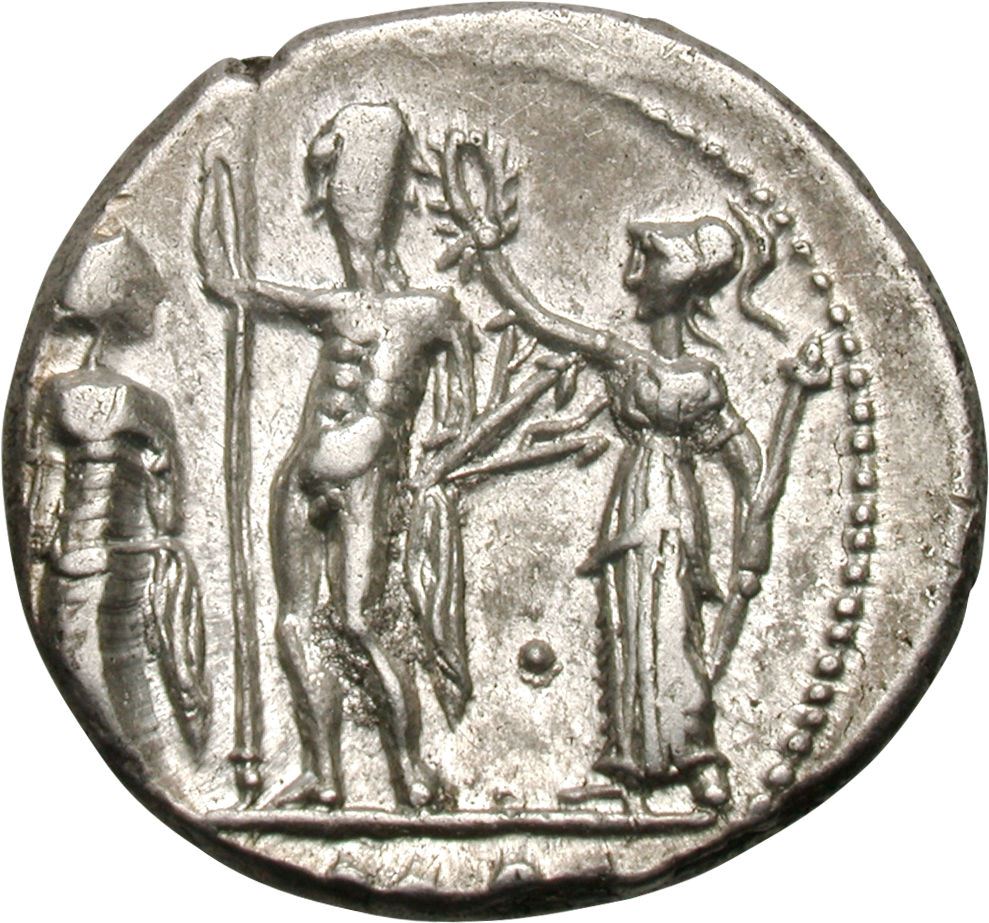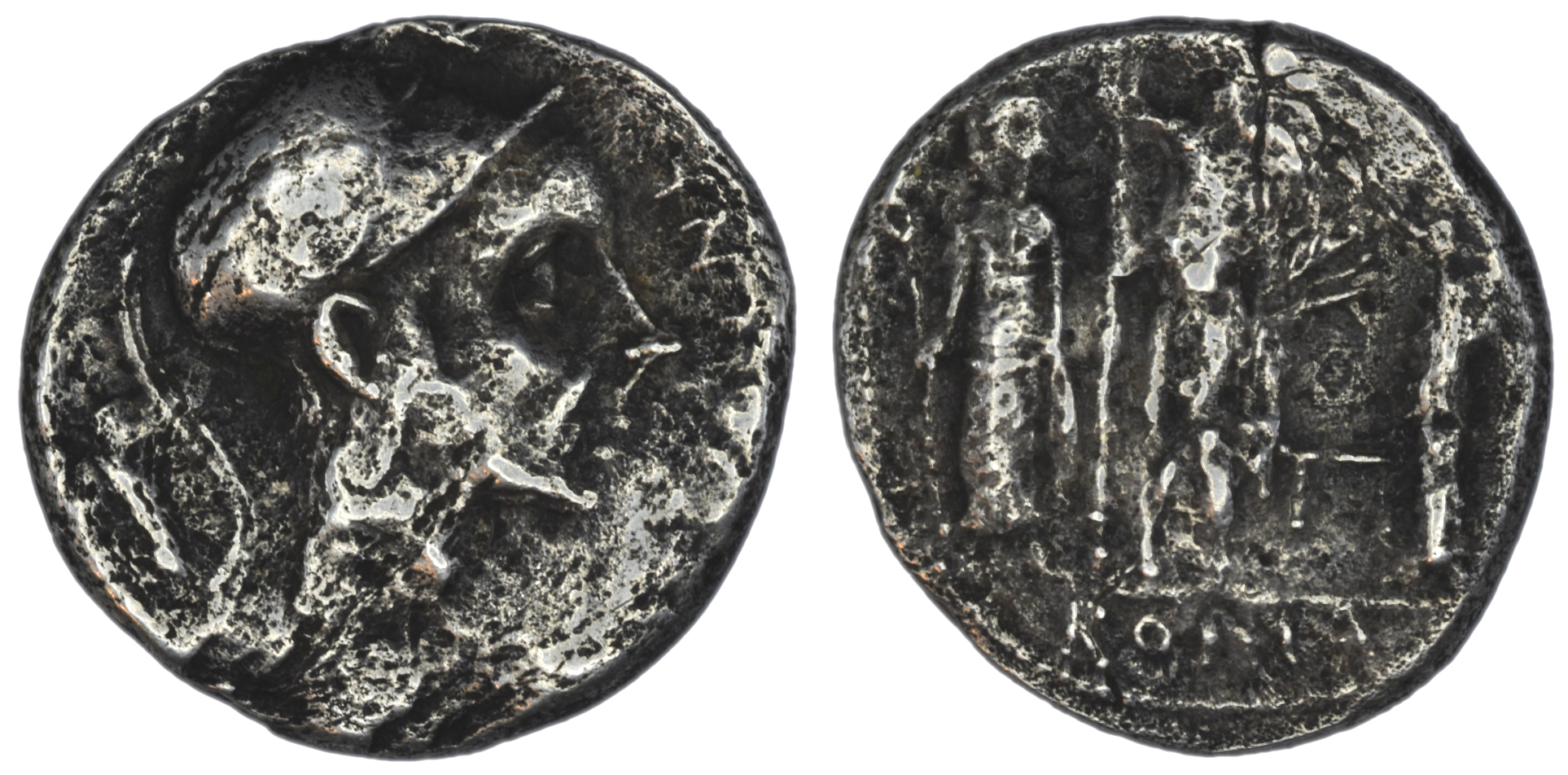Cn. Cornelius Blasio was one of the moneyers for the year 112-111 BC. He is not otherwise known.
Gens Cornelia was one of the greatest patrician houses at Rome. For more than seven hundred years, from the early decades of the Republic to the third century AD, the Cornelii produced more eminent statesmen and generals than any other gens. Nearly a third of all the consuls under the Republic were members of this family, beginning with Servius Cornelius Maluginensis in 485 BC. Together with the Aemilii, Claudii, Fabii, Manlii, and Valerii, the Cornelii were almost certainly numbered among the gentes maiores, the most important and powerful families of Rome, who for centuries dominated the Republican magistracies.
The surnames Arvina, Blasio, Cethegus, Cinna, Cossus, Dolabella, Lentulus, Maluginensis, Mammula, Merenda, Merula, Rufinus, Scapula, Scipio, Sisenna, and Sulla belonged to patrician Cornelii, while the plebeian cognomina included Balbus and Gallus.
Gens Cornelia was one of the greatest patrician houses at Rome. For more than seven hundred years, from the early decades of the Republic to the third century AD, the Cornelii produced more eminent statesmen and generals than any other gens. Nearly a third of all the consuls under the Republic were members of this family, beginning with Servius Cornelius Maluginensis in 485 BC. Together with the Aemilii, Claudii, Fabii, Manlii, and Valerii, the Cornelii were almost certainly numbered among the gentes maiores, the most important and powerful families of Rome, who for centuries dominated the Republican magistracies.
The surnames Arvina, Blasio, Cethegus, Cinna, Cossus, Dolabella, Lentulus, Maluginensis, Mammula, Merenda, Merula, Rufinus, Scapula, Scipio, Sisenna, and Sulla belonged to patrician Cornelii, while the plebeian cognomina included Balbus and Gallus.


Obverse: Helmeted Scipio Africanus head right, wearing crested Corinthian helmet,* monogram above / CN BLASIO CN F before, prow behind.
Reverse: The Capitoline Triad: Jupiter, holding sceptre and thunderbolt, standing facing between Juno and Minerva / Π in field, ROMA in exergue.
Diameter:
19 mm
Die Orientation: -
Weight: 3.49 g
Die Orientation: -
Weight: 3.49 g
Scipio Africanus - Victory over Hannibal.
Publius Cornelius Scipio Africanus (235–183 BC), also known as Scipio Africanus and Scipio the Elder, was a general in the Second Punic War and statesman of the Roman Republic. He was best known for defeating Hannibal at the final battle of the Second Punic War at Zama, a feat that earned him theagnomen Africanus, the nickname "the Roman Hannibal", as well as recognition as one of the finest commanders in military history.
Crawford-296/1d, Cornelia 19.
(25).jpg)
Obverse: Head of Mars right, wearing crested Corinthian helmet; CN BLASIO CN F before, XVI monogram above, control symbol (acrostolium?) behind
Reverse: Jupiter standing facing, holding sceptre and thunderbolt, between Juno and Minerva, the latter crowning Jupiter with wreath; palm branch in central field, dolphin in right field, ROMA (divided by eagle) in exergue
Diameter:
18 mm
Die Orientation: 5 H
Weight: 4.03 g
Die Orientation: 5 H
Weight: 4.03 g
No notes for this coin
Sydenham 561d; RSC Cornelia 20; Sear 173
